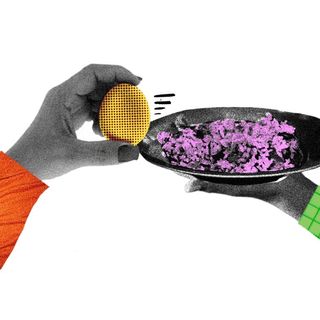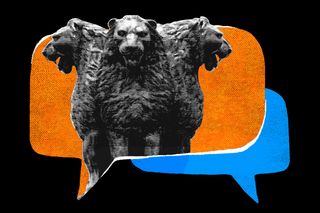
In Conversation: On Angry Lions and Nationalism
The team discusses pressing events that say something about our culture, and why it matters. Today, how the demeanor of lions tells the changing story of us as a nation.

The team discusses pressing events that say something about our culture, and why it matters. Today, we discuss the national emblem recast as “angry” lions, and why it stirs emotion and fervor.
On Monday this week, the Primer Minister unveiled a part of the newly constructed Parliament building in the national capital. Atop the building was a cast of the national emblem — where previously it depicted four serene lions based on an Ashokan pillar at Sarnath, now the lions’ demeanor appears menacing to some. Historians have noted that the new cast stylistically deviates from the original and thereby sends a different message. Where the emblem was originally conceptualized as non-violent, the new cast “sends a message of violence,” according to historian Rajat Kanta Ray.
The controversy prompts questions about nationalism, iconography, and what the undoing of steadfast symbols does to our history, culture, and even our political climate.
AS: The anger or calmness can also be directly linked to the contexts in which they came up. The original lions of Sarnath were used by Ashoka, who had famously renounced war and converted to Buddhism after having caused devastation in Kalinga. The iconography of the lion itself is attached to the Buddha. On the other hand, in recent years, there has been a steep rise in the popularity of militant Hindutva that has also translated into angrier, meaner-looking versions of Hindu figures like Hanuman, Shiva, and Parshuram. Extending this appearance to a traditional Buddhist symbol, and then conducting a puja for its inauguration, is yet another attempt in Brahminism’s long history of co-opting symbols and traditions of belief systems opposed to it. Performing a Puja in an official capacity atop a secular institution, that too the Parliament – the supreme law-making institution – signifies that it has now truly transformed into a temple of democracy that openly places one set of religious and personal beliefs above every other.
DR: The idea behind having national symbols and emblems — besides the official value they hold as the governments’ seals, of course — is uniting people through a visual representation of either their shared history or the goals and values their community reveres. In a way, it’s like the trademark of a country, but one that instills a sense of belongingness among its people — reminding them that irrespective of their socio-cultural differences, they are bound together. The controversy with the latest iteration of the national emblem, however, strikes at the very heart of the emotion it’s meant to inspire — rather than uniting, it has Indians divided. That begs the question: as grand as the new statue may be, is it worth further diluting the country’s fragile unity over, especially at an hour of political unrest? Moreover, the Lion Capital was chosen as India’s national emblem because it represented India’s “commitment to world peace and goodwill.” I wonder now if the “snarling” lions will truly be able to replicate that message?
As for the raging debate around whether the emblem was indeed modified by the government, one can only hope that India’s national motto – “Satyameva Jayate [Truth alone triumphs]” – prevails.
RN: There is something disturbingly autocratic in taking a symbol of national consciousness and unilaterally changing its meaning. Even if, as an individual, one doesn’t set much in store by symbols, the new look is undeniably aggressive and represents the ethos of the ruling government more than it does our history as a nation. This, to me, clearly represents the difference between a government and a nation – where the former is meant to be temporary, administrative, and accountable to the electorate, the latter holds much greater significance in terms of how people form their own identities. But an incident like this, where an essential pillar of democracy is crowned by a symbol that is changed by a political party, represents how the party tries to blur the lines between itself and the nation. Personally, I don’t care for symbols – but I do appreciate their importance. This isn’t to say that all symbols and iconography are infallible – most aren’t, and many even represent a nationhood with shades of violence.
So what is it about the lions that make the change worth discussing? It has to do with the very idea of Indianness itself being changed – considering that the emblem dates back to the very beginning of our Republic. These ideas too aren’t set in stone: everything to do with nationalism is constantly subject to scrutiny, discussion, and dialogue. It has to be. But that’s not what happened here, and it explains why so many care about the serenity of what the symbol used to be and cannot abide the menace lurking beneath now. Much of the danger in what the government does, moreover, is in the subtle symbolic shifts in our ideas of India. We see it in school curriculums, in food policies, in science, the names of places, in statues, monuments, and now, emblems signifying who we are.
Related


What Leads People to Believe in ‘Reverse Discrimination?’
